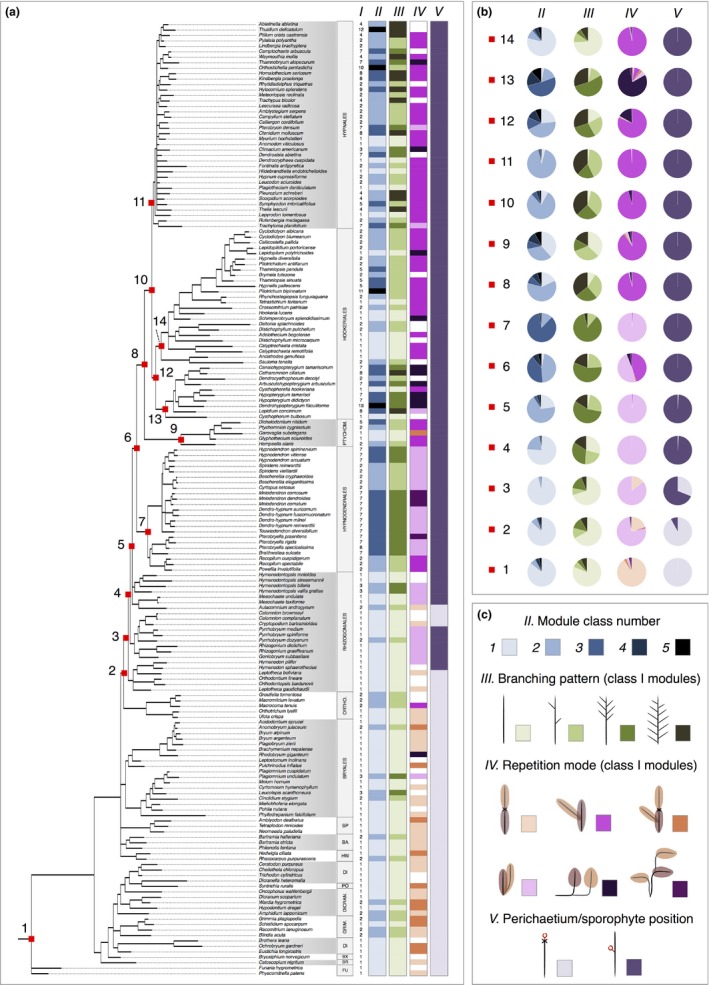Figure 4.

Evolutionary history of developmental innovations underpinning branching form diversification in bryopsid mosses. (a) Phylogenetic distribution of (I) architectural morphotypes, (II) number of module classes, (III) branching patterns for class I modules, (IV) repetition modes for class I modules, and (V) perichaetium/sporophyte position in 175 selected species of Bryopsida. Missing data is shown in white. Abbreviations: FU, Funariales; BR, Bryales; BX, Bryoxiphiales; DI or DICRAN, Dicranales; GRIM, Grimmiales; PO, Pottiales; HW, Hedwigiales; BA, Bartramiales; SP, Splachnales; ORTHO, Orthotricales; PTYCHOM, Ptychomniales. Classification information: Rhizogoniales comprise a grade of three familial clades, the Orthodontiaceae (incl. Orthodontium lineare), Rhizogoniaceae (incl. Rhizogonium distichum) and Aulacomniaceae (incl. Aulacomnium androgynum). Hypnanae (node 6) is a superorder comprising four orders: Hypnodendrales, Ptychomniales, Hookeriales and Hypnales. Node 3 corresponds to all Rhizogoniales and Hypnanae, node 4 corresponds to the Rhizogoniaceae, Aulacomniaceae and Hypnanae, and node 5 corresponds to the Aulacomniaceae and Hypnanae. Hookeriales (node 12) comprise the ‘core Hookeriales’ (node 14) and the family Hypopterygiaceae (node 13). (b) Bayesian reconstruction of ancestral states for characters II, III, IV and V at selected nodes. Pie charts represent mean percentage probabilities of ancestral character states from three independent analyses (Table S2). (c) Key to character states. The number of module classes ranges from 1 to 5 and primary (class I) modules may be unbranched or have diffuse, distal or regular branching patterns. Module repetition modes vary as identified in Fig. 2. Perichaetium/sporophyte position may be acrocarpous (terminal) or pleurocarpous (on short lateral branches). Note: the inference that a change in module repetition mode preceded the origin of pleurocarpy is supported by further character state reconstructions at nodes X, Y and Z that fall between nodes 1 and 2. The results from these analyses are shown in Table S2.
